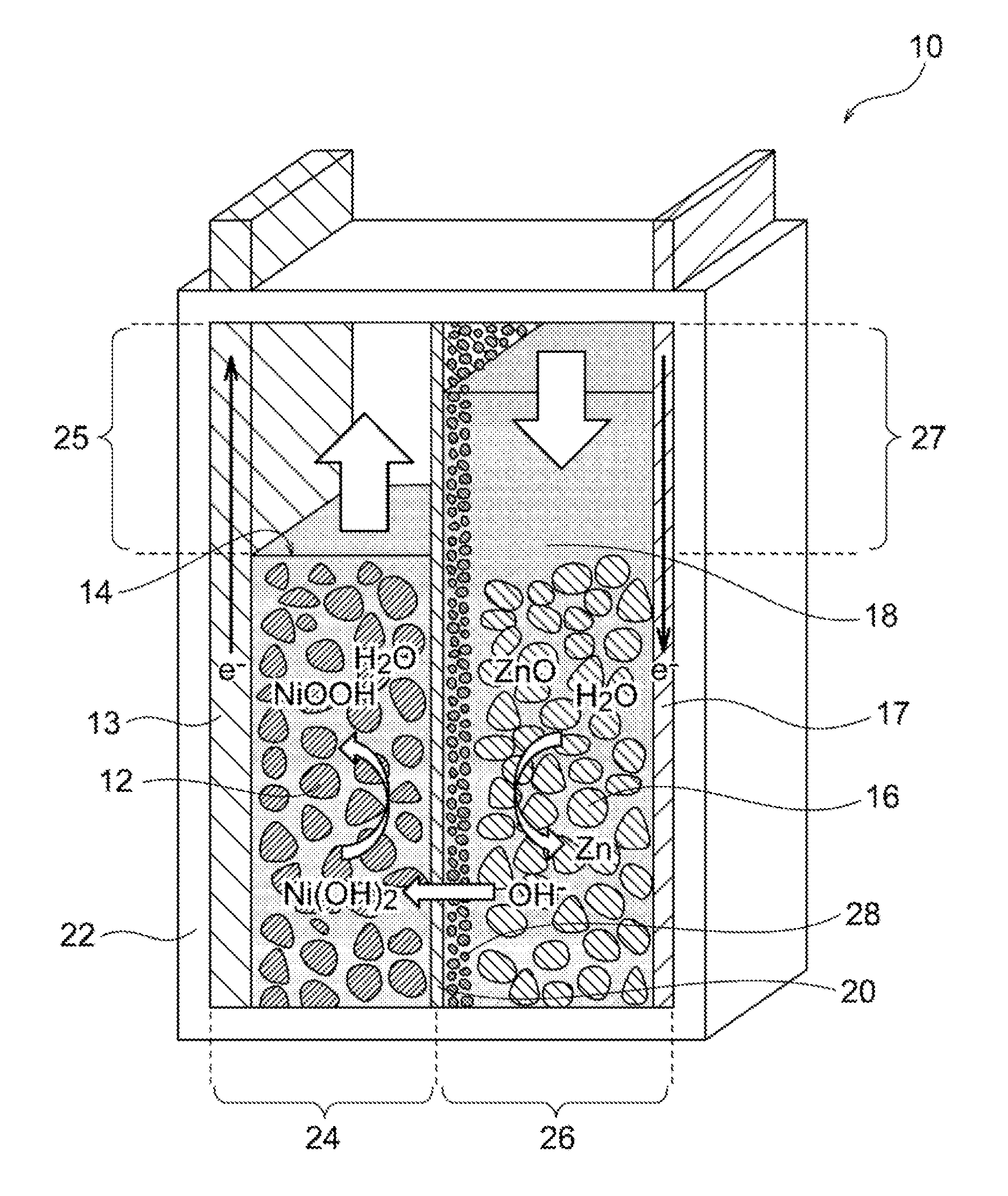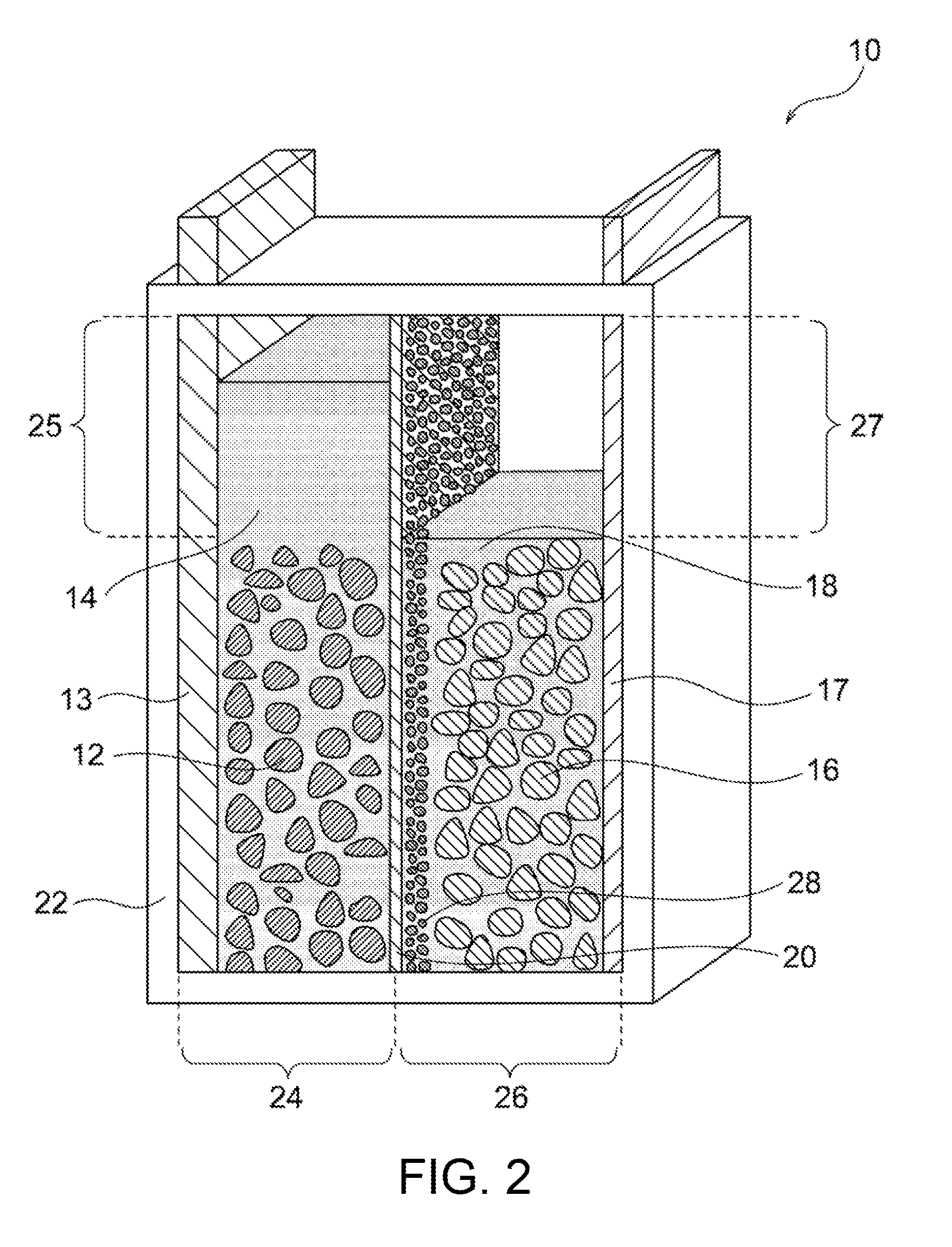Nickel-zinc battery
a technology of nickel-zinc batteries and zinc-zinc batteries, which is applied in the direction of nickel accumulators, cell components, sustainable manufacturing/processing, etc., can solve the problems of short circuit between the negative electrode and the positive electrode, battery performance has not yet been achieved, etc., to prevent or suppress problems, reduce battery performance, and effectively prevent or inhibit problems
- Summary
- Abstract
- Description
- Claims
- Application Information
AI Technical Summary
Benefits of technology
Problems solved by technology
Method used
Image
Examples
example 1
Preparation and Evaluation of LDH Separator with Porous Substrate
[0115](1) Preparation of Porous Substrate
[0116]Boehmite (DISPAL 18N4-80, manufactured by Sasol Limited), methyl cellulose, and ion-exchange water were weighed in proportions by mass of 10:1:5, and were then kneaded together. The kneaded product was subjected to extrusion molding with a hand press into a plate having a size sufficiently exceeding 5 cm×8 cm and a thickness of 0.5 cm. The resultant green body was dried at 80° C. for 12 hours and then fired at 1,150° C. for three hours, to prepare an alumina porous substrate. The porous substrate was cut into a piece of 5 cm×8 cm.
[0117]The porosity at the surface of the resultant porous substrate was determined by a method involving image processing. The porosity was 24.6%. The porosity was determined as follows: 1) a scanning electron microscopic (SEM) image of the surface microstructure of the porous substrate was taken with a scanning electron microscope (SEM; JSM-6610L...
example 2
Production and Evaluation of Nickel-Zinc Battery
(1) Preparation of Separator with Porous Substrate
[0135]A separator provided with a porous substrate (hydrotalcite membrane on alumina substrate) (size: 5 cm×8 cm) was prepared as in Example 1.
(2) Preparation of Positive Electrode Plate
[0136]Particulate nickel hydroxide containing zinc and cobalt in the form of solid solution was prepared. The particulate nickel hydroxide was coated with cobalt hydroxide to yield a positive-electrode active material. The positive-electrode active material was mixed with a 2% aqueous carboxymethyl cellulose solution to prepare a paste. The paste was evenly applied to a current collector composed of a nickel porous substrate having a porosity of about 95% and dried so that the porosity of the positive-electrode active material was 50% to prepare a positive electrode plate having a region of 5 cm×5 cm coated with the active material. The amount of coating was adjusted so that the active material contained...
PUM
| Property | Measurement | Unit |
|---|---|---|
| diameter | aaaaa | aaaaa |
| length | aaaaa | aaaaa |
| ion conductivity | aaaaa | aaaaa |
Abstract
Description
Claims
Application Information
 Login to View More
Login to View More - R&D
- Intellectual Property
- Life Sciences
- Materials
- Tech Scout
- Unparalleled Data Quality
- Higher Quality Content
- 60% Fewer Hallucinations
Browse by: Latest US Patents, China's latest patents, Technical Efficacy Thesaurus, Application Domain, Technology Topic, Popular Technical Reports.
© 2025 PatSnap. All rights reserved.Legal|Privacy policy|Modern Slavery Act Transparency Statement|Sitemap|About US| Contact US: help@patsnap.com



